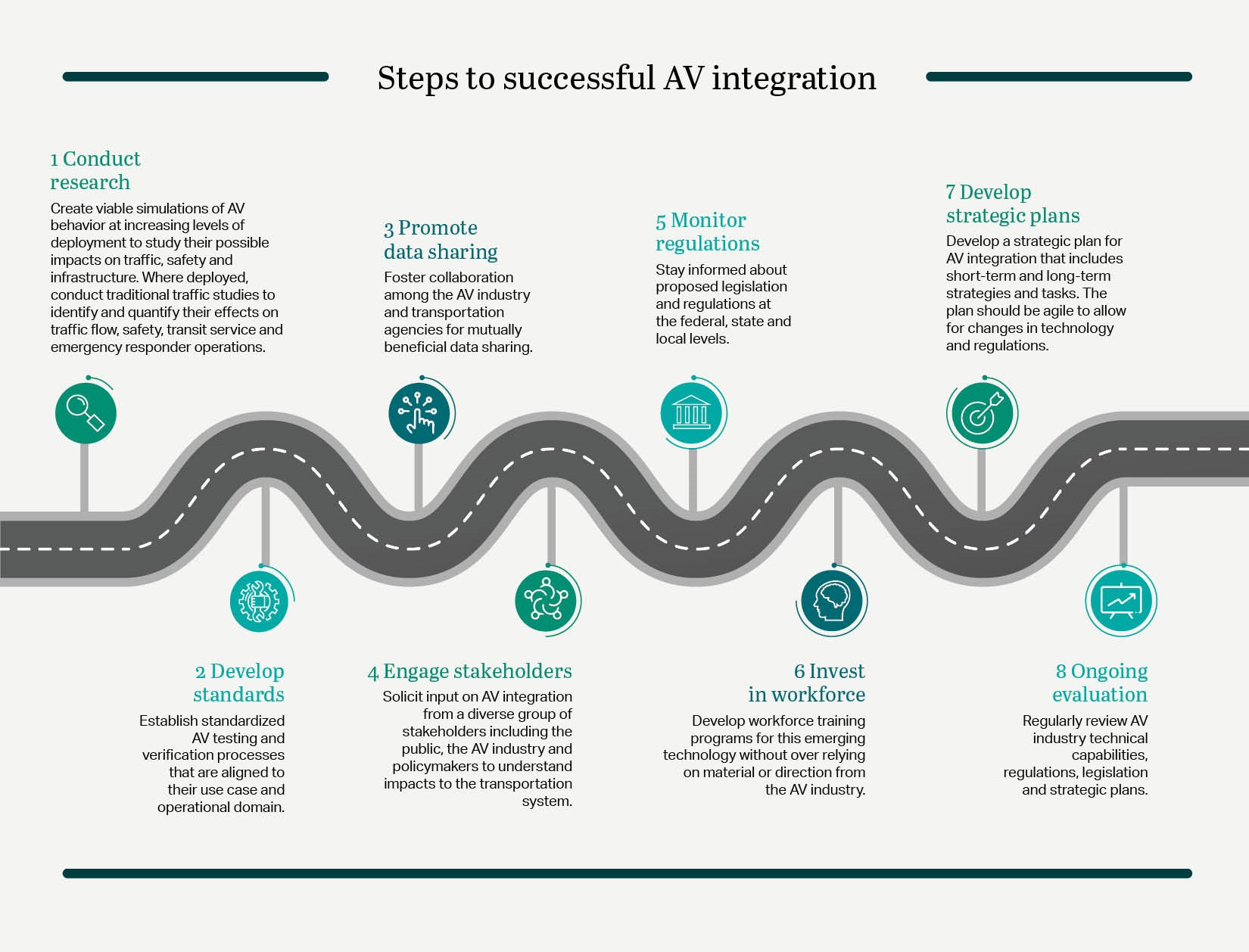Automated vehicles: Getting ready for what’s next
In our first article, Inside the automated vehicle industry, we explored AVs as a new type of vehicle operator that’s challenging long-standing assumptions and design standards created exclusively for human drivers. In the second article, Navigating the promise and pitfalls of automated vehicles, authors examine how AVs are already disrupting traditional transportation norms, and here in the third article, our focus shifts to the major AV sub-industries and how each one has very unique operational goals, regulatory considerations and technical requirements.
There are still many unknowns about how or when automated vehicles (AVs) will be widely integrated into our transportation networks. While they can reduce accidents caused by human error, improve traffic flow, and enhance overall situational awareness, AV deployments also create new challenges.
Inconsistent regulations across jurisdictions, questions surrounding use case viability for different AV applications, and a lack of attention to critical operational considerations are a few of the issues facing the transportation sector and other parts of society. AV performance also remains largely dependent on nominal environmental and road conditions, restricting their operational domains.
What you need to know
We know AVs have the potential to improve transportation, but they also have the potential to make it worse, at least in the short term. To succeed, those looking to deploy AVs must first consider:
- Use case viability: Understanding the different uses and markets for AVs is essential to developing tailored strategies and solutions that reflect the specific needs and challenges of each sector. Robotaxis face important challenges deploying in urban and suburban environments and their success has been limited. Automated buses are progressing but face barriers within the traditional vehicle procurement mechanisms. And before automated goods movement can become viable, the industry must show financial benefit over human-driven operations.
- Effect of inconsistent regulations: AV integration into transportation networks requires updated regulations that account for non-human operators and a clear understanding of AV safety in mixed-traffic environments. The lack of central regulations leads to varied local laws that include permissive or restrictive language ― and sometimes no language at all ― making it particularly hard for long-haul freight AVs crossing multiple jurisdictions. Our entire regulatory landscape for transportation must evolve to balance innovation with safety while also factoring in cybersecurity measures to protect AV systems.
- Communication and vehicle co-ordination: A key enabler for large-scale AV deployments will be their ability to communicate with other vehicles, infrastructure devices and cloud technology to facilitate situational awareness and coordination of movement. Communication protocols like Vehicle-to-Infrastructure (V2I) and Vehicle-to-Everything (V2X) enable AVs to share information and synchronize their actions to avoid collisions and smooth traffic flow. However, connectivity alone is insufficient, and AVs will need the ability to coordinate their movements. Regardless of AV brand or use case, this communication and coordination will rely on trust among industry players, and mutually-adopted software protocols that are currently not even being discussed among developers, vehicle manufacturers or policy makers.
- Operational considerations: AVs can operate 24/7, which is beneficial for goods movement and increased transit service, but it could also lead to increased congestion. What’s more, a large cluster of AVs in a given location could create a system-level effect that will need to be managed to mitigate or avoid negative impacts on other systems users. And while infrastructure modifications are not strictly necessary for AV operation, enhancements such as high-contrast lane markings and traffic signals, along with location-specific situational data could yield benefits for AVs and human users alike.
- Complex environments: AVs currently operate best in environments with nominal weather and road conditions and with few, if any, interactions with dynamic roadway users such as other cars and vulnerable road users. This environment, however, is not the busy and unpredictable environment where most vehicles and people operate. To date, AV testing has been limited to environments and settings where variables can be controlled or constrained, further challenging successful deployments in real life scenarios.
Steps to successful AV integration

As AVs reach a point where they are operating within defined regulatory frameworks, communicating with each other, and coordinating their movements to achieve specific goals, they will positively affect the safety and efficiency of our transportation systems, even at low levels of market penetration.
For additional information contact paul.avery@aecom.com or edward.stubbing@aecom.com.






